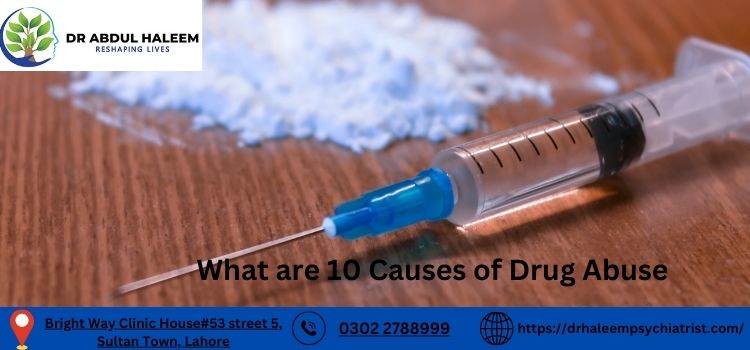Do chronic physical symptoms have a significant impact on your life? If the answer is yes, you may be experiencing Somatic Symptom Disorder (SSD). Also known as bodily distress syndrome or functional somatic syndrome, SSD is a complex mental health condition that causes physical symptoms and psychological distress.
In this blog post, we’ll dive into what SSD is in detail so you can make an informed decision about your treatment options. We’ll also look at how it differs from other illnesses with similar symptoms.
Let’s get started!
What is Somatic Symptom Disorder?

The question that is asked by many people is What is Somatic Symptom Disorder? Somatic Symptom Disorder (SSD) is a type of mental health condition that falls under the category of somatic symptoms and related disorders. It is characterized by extreme and disproportionate levels of distress over physical symptoms, even if there is no underlying medical cause.
These symptoms can range from mild to severe and may be persistent or recurring.
Individuals with SSD often become preoccupied with their physical symptoms, worrying constantly about potential causes and seeking reassurance from healthcare providers. This can significantly impact daily functioning, relationships, and overall quality of life.
Causes
The exact cause of SSD is not known, but it is believed to be a combination of genetic, biological, and psychological factors. Individuals who have a history of trauma or abuse may also be at higher risk for developing SSD.
Biological Factors:
Some research suggests that individuals with SSD may have differences in brain structure and function, particularly in areas related to pain perception and emotional processing. This could contribute to the heightened experience of physical symptoms and psychological distress.
Psychological Factors:
SSD is also influenced by psychological factors such as stress, anxiety, depression, and negative thinking patterns. These can exacerbate physical symptoms and make it difficult to cope with them.
Environmental Factors:
External factors, such as a history of trauma or a stressful life event, can also contribute to the development of SSD. These factors can trigger the onset of symptoms or worsen existing ones.
Symptoms
The primary symptom of SSD is excessive and disproportionate levels of distress over physical symptoms. These symptoms can vary widely and may include pain, fatigue, gastrointestinal issues, neurological problems, and more.
Other common symptoms include:
- Frequent doctor visits or medical tests
- Persistent worry about medical causes for physical symptoms
- Fear of having a serious illness
- Difficulty functioning due to physical symptoms
- Significant impact on daily life, including work, relationships, and social activities
Diagnosis
Since physical symptoms can have various medical causes, it is essential to first rule out any underlying medical conditions before diagnosing SSD. A thorough physical examination and medical history review are necessary for accurate diagnosis.
Additionally, individuals must meet the criteria outlined in the DSM-5 (Diagnostic and Statistical Manual of Mental Disorders) to receive an official diagnosis of SSD.
Treatment
Fortunately, there are effective treatment options available for individuals with SSD. Treatment plans may include a combination of therapy, medication, and lifestyle changes. Treatment Options:
Therapy
Therapy, such as cognitive-behavioral therapy (CBT), can help individuals with SSD understand and manage their symptoms. This type of therapy focuses on changing negative thought patterns and behaviors that contribute to somatic symptoms. It can also help individuals develop more effective coping strategies and improve overall well-being.
Medication
In some cases, medication may be prescribed to manage symptoms of SSD. This may include antidepressants or anti-anxiety medications. It is important to work closely with a healthcare provider to find the right medication and dosage for each individual’s needs.
Lifestyle Changes
Making lifestyle changes can also help improve symptoms of SSD. Engaging in regular physical activity, practicing relaxation techniques, and maintaining a healthy diet can all contribute to overall well-being and reduce the impact of somatic symptoms.
Differences from Other Illnesses
SSD may have similar symptoms to other physical illnesses, such as fibromyalgia or chronic fatigue syndrome. However, the key difference is that there is no underlying medical cause for the symptoms experienced in SSD.
Additionally, individuals with SSD may have a heightened and disproportionate level of distress over their symptoms, which is not typically seen in other illnesses.
What is the Best Treatment for Somatic Symptom Disorder?
The best treatment for SSD varies from person to person, as everyone experiences symptoms differently. It is essential to work closely with a healthcare provider to develop a personalized treatment plan that addresses both physical and psychological symptoms.
Additionally, seeking support from therapists, support groups, or online communities can also help manage SSD and improve overall well-being. Remember, with proper treatment and self-care, it is possible to live a fulfilling life with SSD. So, don’t hesitate to seek help and support if you think you may be experiencing symptoms of this condition. You are not alone.
Coping Strategies
In addition to seeking treatment, there are several coping strategies that individuals with SSD can use to manage their symptoms:
- Educating oneself about SSD and its causes
- Practicing relaxation techniques, such as deep breathing or yoga
- Identifying and challenging negative thought patterns
- Engaging in regular physical activity
- Maintaining a healthy diet
- Seeking support from loved ones or support groups
- Setting realistic goals and expectations
- Avoiding excessive reassurance seeking from healthcare providers
Implementing these coping strategies can help individuals with SSD reduce their symptoms and improve overall well-being.
Complications
Some of the complications are given below:
- Difficulty functioning in daily life
- Strained relationships with loved ones
- Reduced quality of life
- Increased risk of developing other mental health disorders, such as anxiety or depression
- Financial strain due to frequent medical visits and tests.
- Increased risk of developing chronic pain or other physical symptoms.
Who does Somatic Symptom Disorder Affect?
SSD can affect anyone, regardless of age, gender, or background. However, it is more commonly diagnosed in women and individuals with a history of trauma or stressful life events.
Conclusion
The question that is asked by many people is What is Somatic Symptom Disorder? Somatic Symptom Disorder is a complex condition that can significantly impact an individual’s life. It is essential to seek help and support from healthcare professionals and loved ones to manage symptoms effectively.
Remember, you are not alone in this journey. Help and support are available. So, don’t hesitate to reach out for help if you think you may be experiencing symptoms of SSD. Take care of yourself and prioritize your mental and physical health. With the right tools and resources, it is possible to manage SSD and lead a happy and healthy life.
FAQs
Some of the frequently asked questions by people are mentioned below:
What is an example of a somatic symptom disorder?
An example of a somatic symptom disorder is when an individual experiences persistent and distressing physical symptoms, such as headaches or stomach pain, without any underlying medical cause.
What’s the difference between somatic symptom disorder and conversion disorder?
Somatic symptom disorder involves experiencing physical symptoms without a medical cause, while conversion disorder involves experiencing neurological symptoms, such as paralysis or seizures, that cannot be explained by medical tests.
What is the main difference between somatic symptom disorder and factitious disorder?
The main difference between somatic symptom disorder and factitious disorder is that individuals with factitious disorder intentionally produce or exaggerate physical symptoms for attention or sympathy, while those with somatic symptom disorder experience genuine distress and are not consciously fabricating their symptoms.
What is somatic symptom disorder in psychology today?
In psychology today, somatic symptom disorder is defined as a mental health condition in which individuals experience distressing physical symptoms without an identifiable medical cause. It is also referred to as “somatic symptom and related disorders” in the latest edition of the Diagnostic and Statistical Manual of Mental Disorders (DSM-5).


